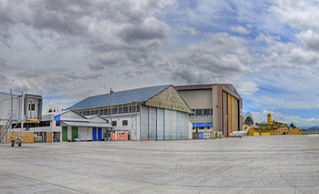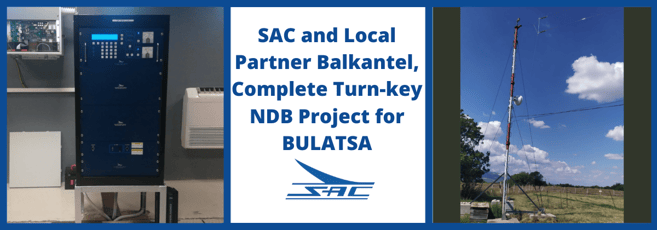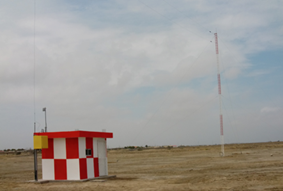SAC and Local Partner Balkantel, Complete Turn-key NDB Project for BULATSA
With local partner Balkantel, SAC completes a turn-key NDB Project for the Bulgarian Civil Aviation...

Navigational safety is a top priority for airports, regardless of size or location. Pilots need to be able to consistently locate and land at the airport in order to get people and products to their final destinations efficiently. A trip that does not result in a safe landing at the airport is a waste of time and resources, not to mention potentially dangerous for the pilots.
As the civil aviation authority, the client is responsible for the regulation of 26 airports in Ecuador. The client is continuously improving internal systems and processes to ensure airport safety and promote the development of civil aviation in Ecuador.
When the client needed a navigational solution for twelve different sites across Ecuador, they knew they needed a reliable product from an experienced provider in the industry. Southern Avionics was selected because of the high quality of their NDBs and their reputation for providing excellent support to their customers.
The client needed to install non-directional beacons (NDB) in order to achieve compliance with navigational and safety regulations. Each of the twelve sites had unique ground conditions and range requirements, and every transmitter would require remote control capabilities.
A complete NDB solution requires precise configuration of many components. Southern Avionics conducted a thorough site survey in order to determine the exact parts necessary for an optimal set up. The sites were especially challenging due to the poor terrain, unique site characteristics, and range requirements. With Southern Avionics’ experience, each site was analyzed and equipment was selected to meet the requirements in an optimal configuration.
Southern avionics delivered and installed seven 125 watt and five 500 watt SE series NDB systems to the client. The low power sites included our model SE125 NDB, ATU with T antennas from 18m to 27m. The medium power installations included our model SE500 NDB, ATU with T & Mast antennas 27m to 40m in height.
The challenge was remote access connecting the NDB to the tower without having to bury cables through the rocky, lava based soil. Southern Avionics SE unit’s Ethernet capabilities allowed for remote access through a 5.6 GHz radio link. This connected each site with computers located in the control tower and allowed each unit to be operated from the workstations.
With the NDB systems and remote control units in place the client is now able to efficiently monitor and control each system from a centralized location, and maintenance is easier to complete without always having to go out to the transmitter.
Because of Southern Avionics’ demonstrated expertise in NDB installation, they are now the preferred vendor for the client’s navigational needs. Southern Avionics will be carrying out site surveys, implementing NDBs, and assisting in ongoing maintenance and support for all of the airports under the client’s jurisdiction.

With local partner Balkantel, SAC completes a turn-key NDB Project for the Bulgarian Civil Aviation...

A small, regional airport in Ecuador couldn’t get site approval due to an erratic...
Leave a Comment